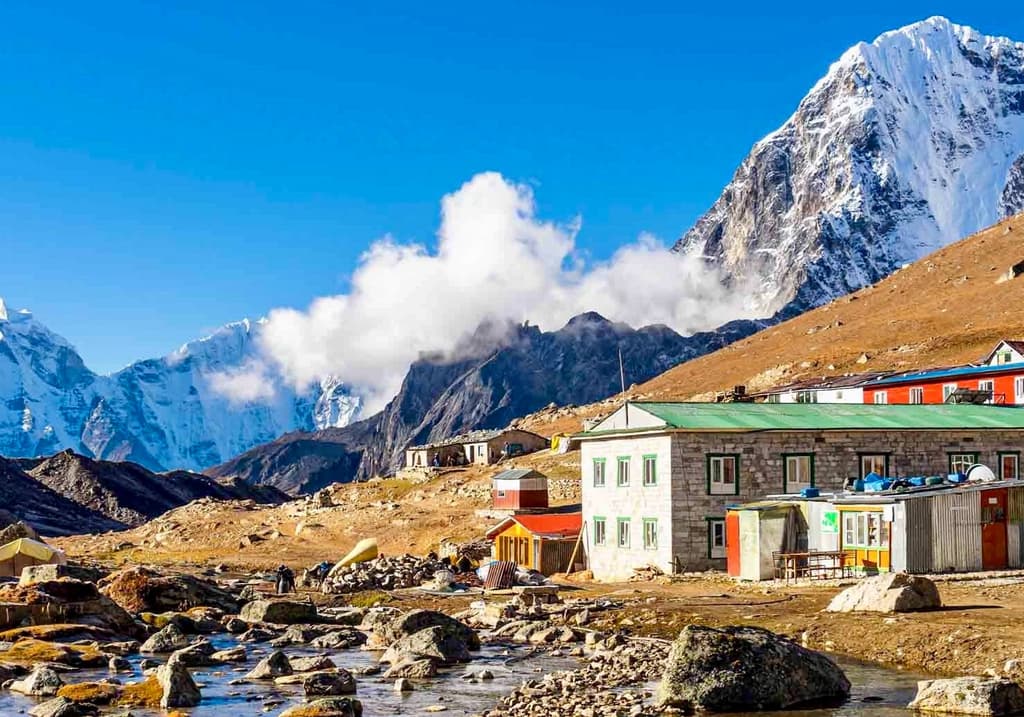Set against the surreal backdrop of the Himalayas, the Everest Base Camp Trek is an unforgettable journey to the foot of the world's highest peak. Offering breathtaking mountain vistas, glimpses of Sherpa culture, and a transformative personal experience, the trek typically takes 12-14 days, starting and concluding in the vibrant city of Kathmandu. In this blog, we'll guide you through the itinerary of this highly coveted adventure, so you can know what to expect as you plan your trek to Everest Base Camp. Remember, while we outline a standard plan, the exact duration may differ based on your pace, acclimatization days, weather conditions, and any side trips you choose to embark on. Let's start this thrilling expedition virtually!
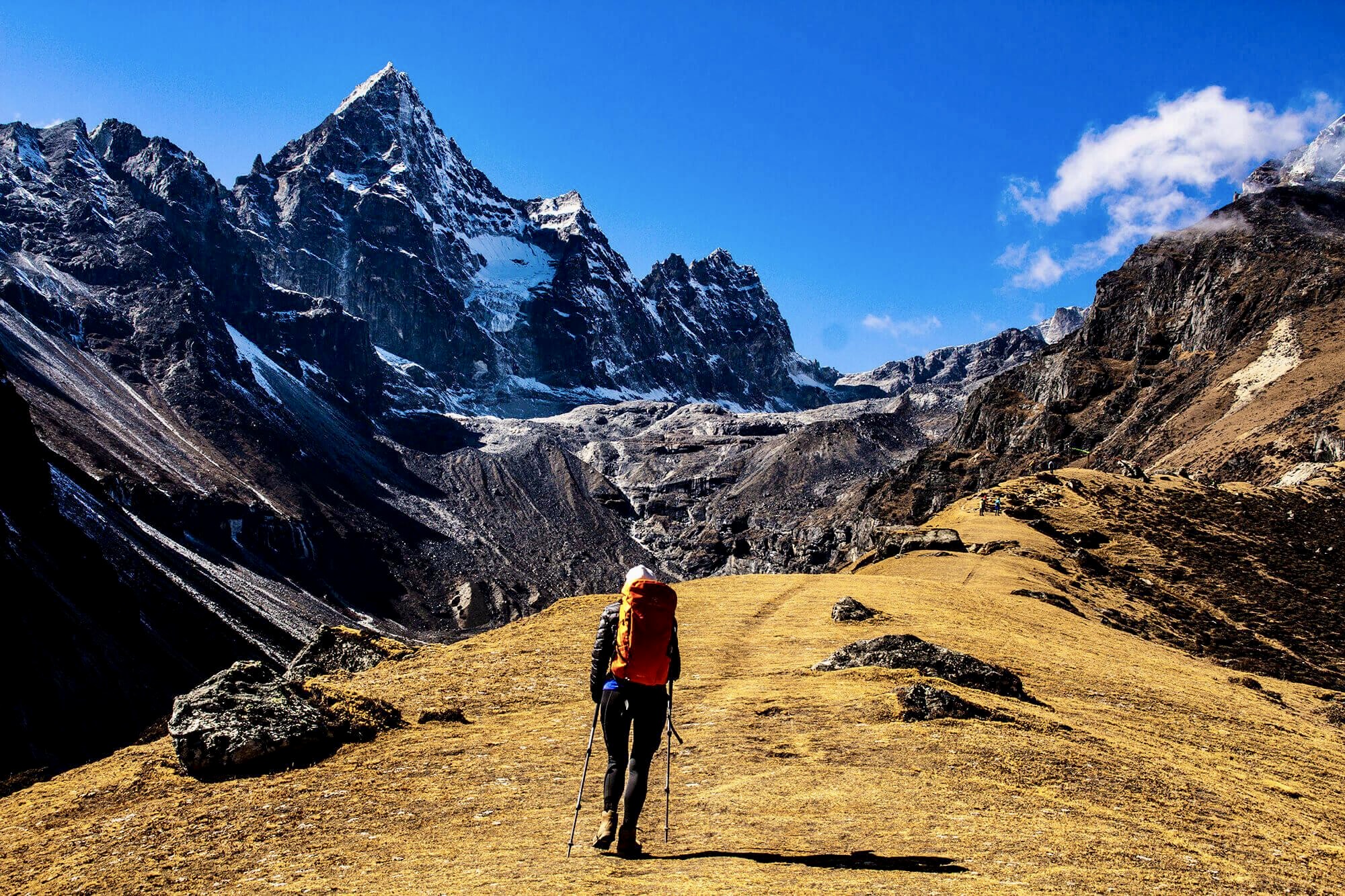
The Everest Base Camp Trek: A Comprehensive Itinerary
Day 1: Arrival in Kathmandu (1,350m/4,429ft)
Upon arrival at Tribhuvan International Airport in Kathmandu, you'll be greeted and transferred to your hotel. The vibrant city pulsates with life and color. Depending on your arrival time, you can take the opportunity to explore some of the city's UNESCO World Heritage sites or rest up for the journey ahead.
Day 2: Fly to Lukla, Trek to Phakding (2,651m/8,700ft, 8km, 3-4 hours)
Start your day early with a scenic flight from Kathmandu to Lukla, the gateway to the Khumbu region. The flight is an adventure in itself with thrilling views of the Himalayas. From Lukla, you start your trek, descending towards the Dudh Koshi River and the village of Phakding.
Day 3: Trek to Namche Bazaar (3,438m/11,280ft, 11km, 5-6 hours)
Embark on a trail passing through pine forests, crossing suspension bridges, and charming Sherpa villages before you reach the bustling hub of Namche Bazaar.
Day 4: Acclimatization Day in Namche Bazaar
Take a rest day in Namche Bazaar for acclimatization. Explore the town, visit the local market, or hike up to the Everest View Hotel for splendid views of Mount Everest and other nearby peaks.
Day 5: Trek to Tengboche (3,870m/12,697ft, 10km, 5-6 hours)
From Namche Bazaar, trek through rhododendron forests until you reach the village of Tengboche. Visit the famous Tengboche Monastery, offering the first glimpse of Mount Everest.
Day 6: Trek to Dingboche (4,360m/14,300ft, 9km, 5-6 hours)
Pass through quaint Sherpa villages and cross the Imja River as you ascend to Dingboche, the gateway to the Chukhung Valley.
Day 7: Acclimatization Day in Dingboche
Spend another day in Dingboche to acclimatize. You can explore the village, rest, or undertake some optional hikes for more breathtaking views.
Day 8: Trek to Lobuche (4,940m/16,208ft, 7km, 5-6 hours)
The trail leads you through the Khumbu Glacier's lateral moraine to the Sherpa memorial. After a brief descent, you continue upwards until you reach Lobuche.
Day 9: Trek to Gorak Shep (5,160m/17,000ft), Visit Everest Base Camp (5,364m/17,598ft, 13km, 6-7 hours)
This is the most awaited day of your trek. Head towards Gorak Shep, have lunch, and continue towards Everest Base Camp. Spend some time enjoying the immense beauty of the mountains and descend back to Gorak Shep for the night.
Day 10: Visit Kala Patthar (5,550m/18,210ft), Trek down to Pheriche (4,371m/14,340ft, 16km, 7-8 hours)
Early morning, hike up to Kala Patthar for the best panoramic view of Mount Everest and other peaks. Descend to Pheriche for the night.

Day 11-13: Trek back to Namche Bazaar and then Lukla (7,4km, 6-7 hours each day)
Follow the same trail used earlier to trek back to Lukla, resting overnight at Namche Bazaar and then reaching Lukla on the 13th day.
Day 14: Fly Back to Kathmandu
Take an early morning flight back to Kathmandu. You can use the day to rest, shop for souvenirs, or continue exploring the city.
Day 15: Departure or Extend Your Trip
Depending on your plans, you can either depart for your onward journey or extend your stay to explore more of what Nepal has to offer.
This itinerary can vary based on the travel agency you choose, your speed, and the weather conditions. It's crucial to keep some buffer days in case of unforeseen circumstances, including bad weather. Regardless of the exact schedule, every day of the trek promises exhilarating beauty and a sense of accomplishment. Happy Trekking!
Adding to The Itinerary: Gokyo Lakes Trek
If you want to add more variety and beauty to your Everest Base Camp Trek, you can consider adding the Gokyo Lakes trek to your itinerary. This variation of the trek takes you to the beautiful Gokyo Valley, home to a series of emerald-green glacial lakes, and offers an alternative view of the Everest region. The key additional steps in the itinerary include:
Day 6: Trek from Tengboche to Dole (4,110m/13,480ft, 9km, 5-6 hours)
Rather than moving towards Dingboche, you will head towards Dole, crossing beautiful rhododendrons and birch forests.
Day 7: Trek from Dole to Machhermo (4,470m/14,663ft, 4km, 4-5 hours)
The trek continues up through the valley, with the snowcapped peaks offering a splendid backdrop.
Day 8: Trek from Machhermo to Gokyo (4,800m/15,744ft, 7km, 4-5 hours)
The highlight of this day is reaching the third Gokyo Lake, a stunning turquoise lake, where the village of Gokyo is situated right on its edge.
Day 9: Exploration day around Gokyo – Climb Gokyo Ri (5,357m/17,570ft)
The climb to the summit of Gokyo Ri is demanding but hugely rewarding, offering spectacular panoramic views of Everest and other Himalayan peaks.
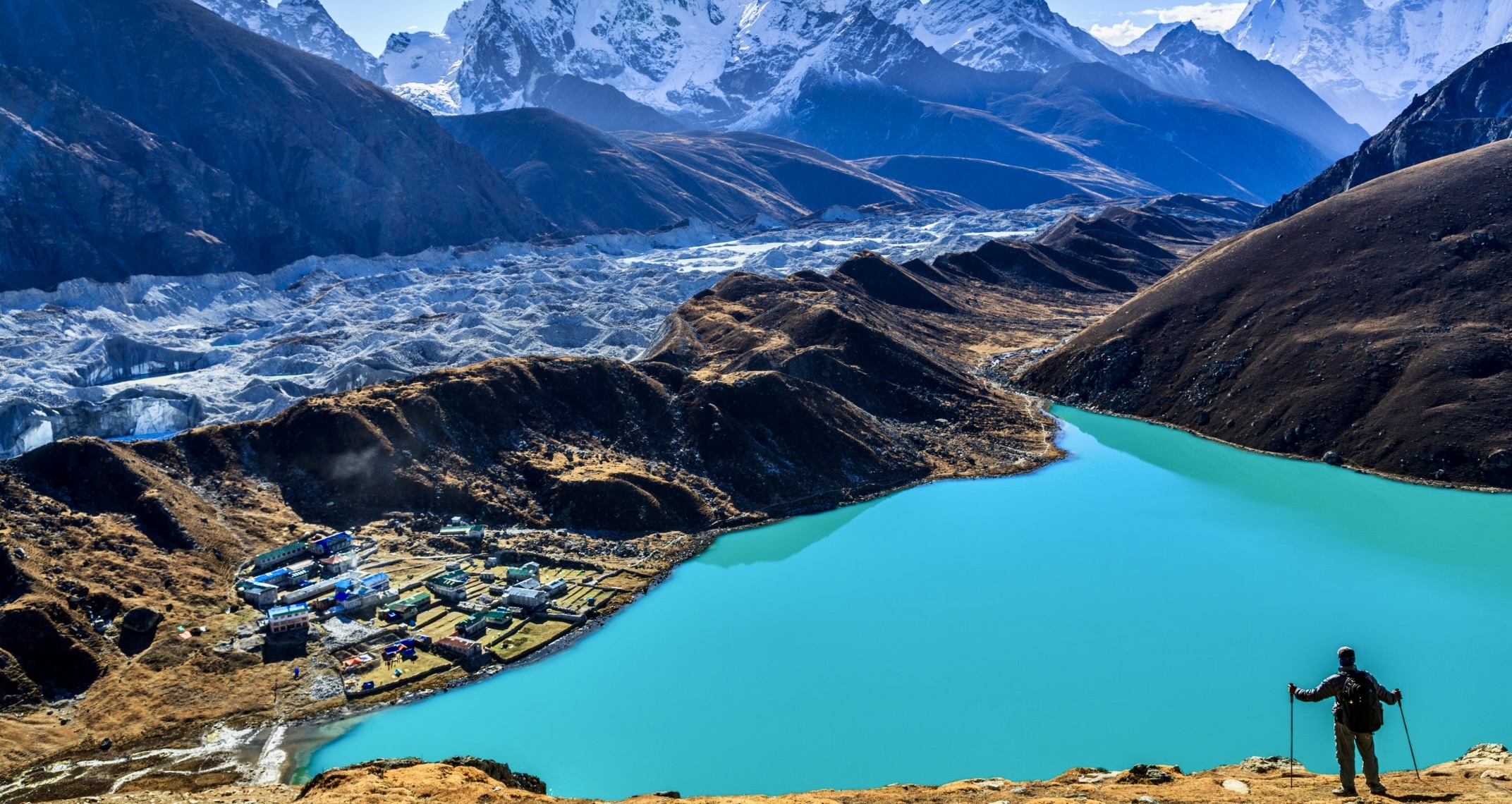
Day 10: Trek from Gokyo to Thagnak (4,700m/15,416ft, 3km, 2-3 hours)
This day is relatively easy and will prepare you for the challenging trek over the Cho La Pass the next day.
Day 11: Trek from Thagnak to Dzongla via Cho La Pass (4,830m/15,846ft, 12km, 7-8 hours)
This is one of the most challenging parts of the trek, crossing the Cho La Pass. On clear days, you can enjoy the stunning view of the surrounding mountains.
Day 12: Trek from Dzongla to Lobuche (4,940m/16,207ft, 6km, 3-4 hours)
You will rejoin the classic EBC trail when you reach Lobuche.
From here, you can continue following the original Everest Base Camp Trek Itinerary.
Including Gokyo Lakes and the Cho La Pass adds around four to five days to the standard Everest Base Camp Trek and is considered more challenging due to the high altitude pass crossing. However, it is undoubtedly one of the most beautiful and rewarding treks in the Everest region.
Everest Heli Trek
The Everest Heli Trek is an excellent choice for those seeking a blend of adventure and luxury. This itinerary offers the quintessential Everest Base Camp trekking experience, with a spectacular helicopter flight back to Kathmandu from Gorak Shep, a tiny settlement near Everest Base Camp.
Here's a general itinerary for an Everest Heli Trek:
Day 1 - Arrival in Kathmandu
Once you arrive in Kathmandu, a representative from Luxury Holidays Nepal will pick you up from the airport and transfer you to your hotel.
Day 2 - Kathmandu to Lukla (Flight), trek to Phakding
On the second day, you'll take a thrilling flight to Lukla, a small town and the gateway to the Everest Region. From Lukla, you will trek to Phakding.
Day 3-5 - Trek to Namche Bazaar and acclimatization day
You will trek towards Namche Bazaar, the Sherpa capital, with its bustling markets and rich Sherpa culture. An extra day is spent here for acclimatization.
Day 6-8 - Trek to Tengboche, Dingboche
You'll trek to Tengboche, home to the biggest Buddhist Monastery in the Khumbu region. You will then proceed to Dingboche, where another rest day is spent for further acclimatization.
Day 9-11 - Trek to Lobuche, Gorak Shep, Everest Base Camp, Kala Patthar
These are the most challenging and rewarding days of the trek. You'll reach Everest Base Camp and climb Kala Patthar for panoramic views of Everest and the surrounding peaks.
Day 12 - Helicopter Flight back to Kathmandu
Instead of trekking back down to Lukla, you will hop on a helicopter at Gorak Shep and fly back to Kathmandu, offering you breathtaking aerial views of the landscape you just trekked through.
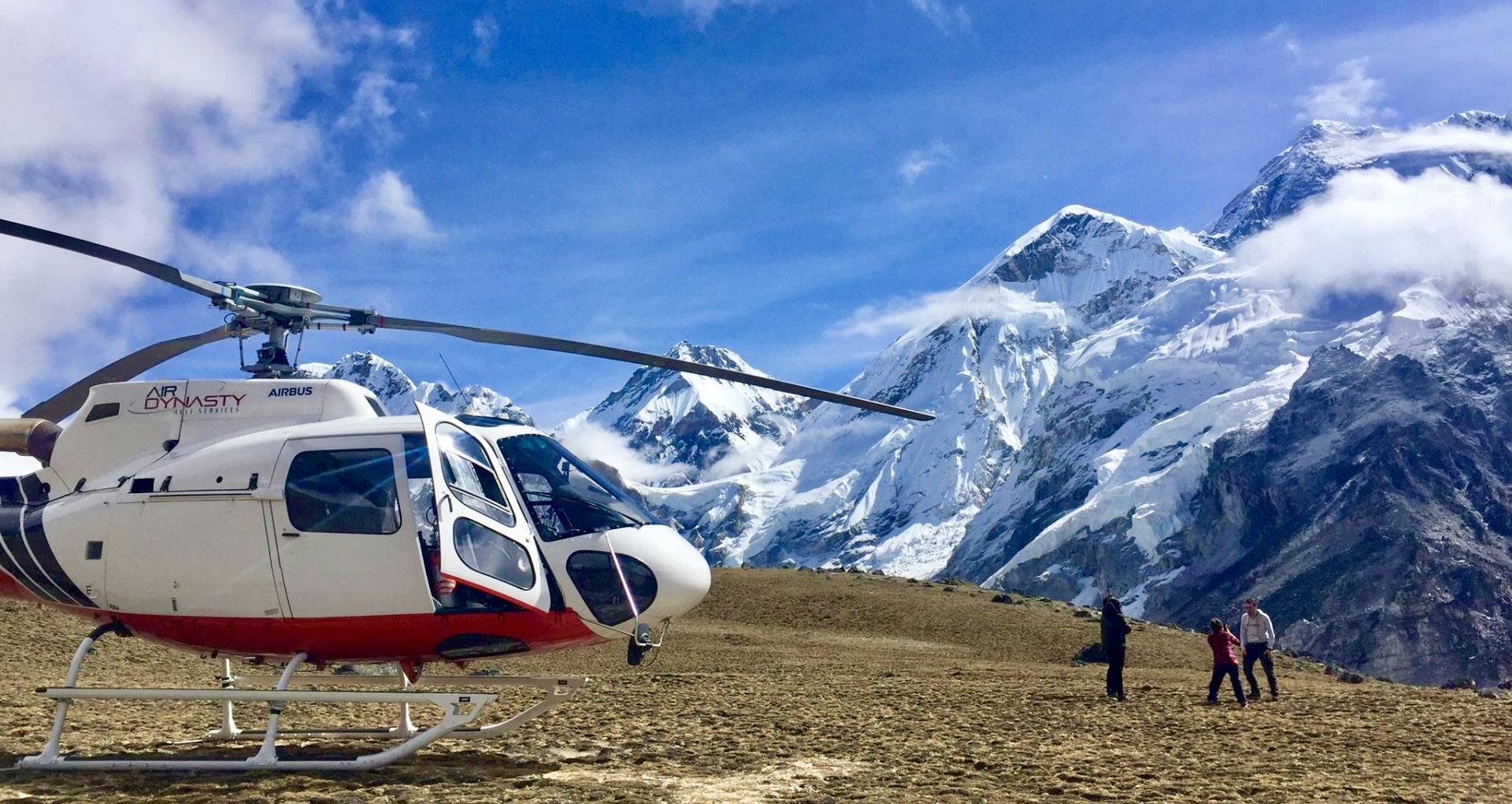
Day 13 - Departure or Optional Sightseeing
Depending on your plans, you can depart for your onward journey or choose to spend an additional day sightseeing around Kathmandu.
The Everest Heli Trek provides trekkers with the experience of reaching Everest Base Camp and the comfort of a helicopter ride back. It's a luxurious alternative that allows you to complete the trek in less time, without missing out on any of the highlights. Do note that costs for this type of trek will be higher than the standard Everest Base Camp Trek due to the helicopter service.
Luxury Everest Base Camp Trek
The Luxury Everest Base Camp Trek is an excellent choice for those who want to experience the thrill of reaching the base of the world's highest peak, Mt. Everest, without compromising on comfort. This trek is designed to provide a high level of service and facilities, ensuring you enjoy the journey as much as the destination. Here's a general itinerary:
Day 1 - Arrival in Kathmandu
Upon your arrival at Kathmandu airport, you will be greeted by a representative from the Luxury Holidays Nepal and transferred to a 5-star hotel in the city.
Day 2 - Sightseeing in Kathmandu
This day is reserved for sightseeing in Kathmandu, exploring its UNESCO World Heritage Sites, and preparing for the trek.
Day 3 - Kathmandu to Lukla (Flight), trek to Phakding
Fly to Lukla on a scenic flight and start the trek towards Phakding. You will be accommodated in a luxury lodge.
Day 4-6 - Trek to Namche Bazaar, Acclimatization
Trek to Namche Bazaar, a bustling Sherpa town, and hub for Everest trekkers. Spend an extra day here to acclimatize and explore. You will stay in a comfortable luxury lodge.
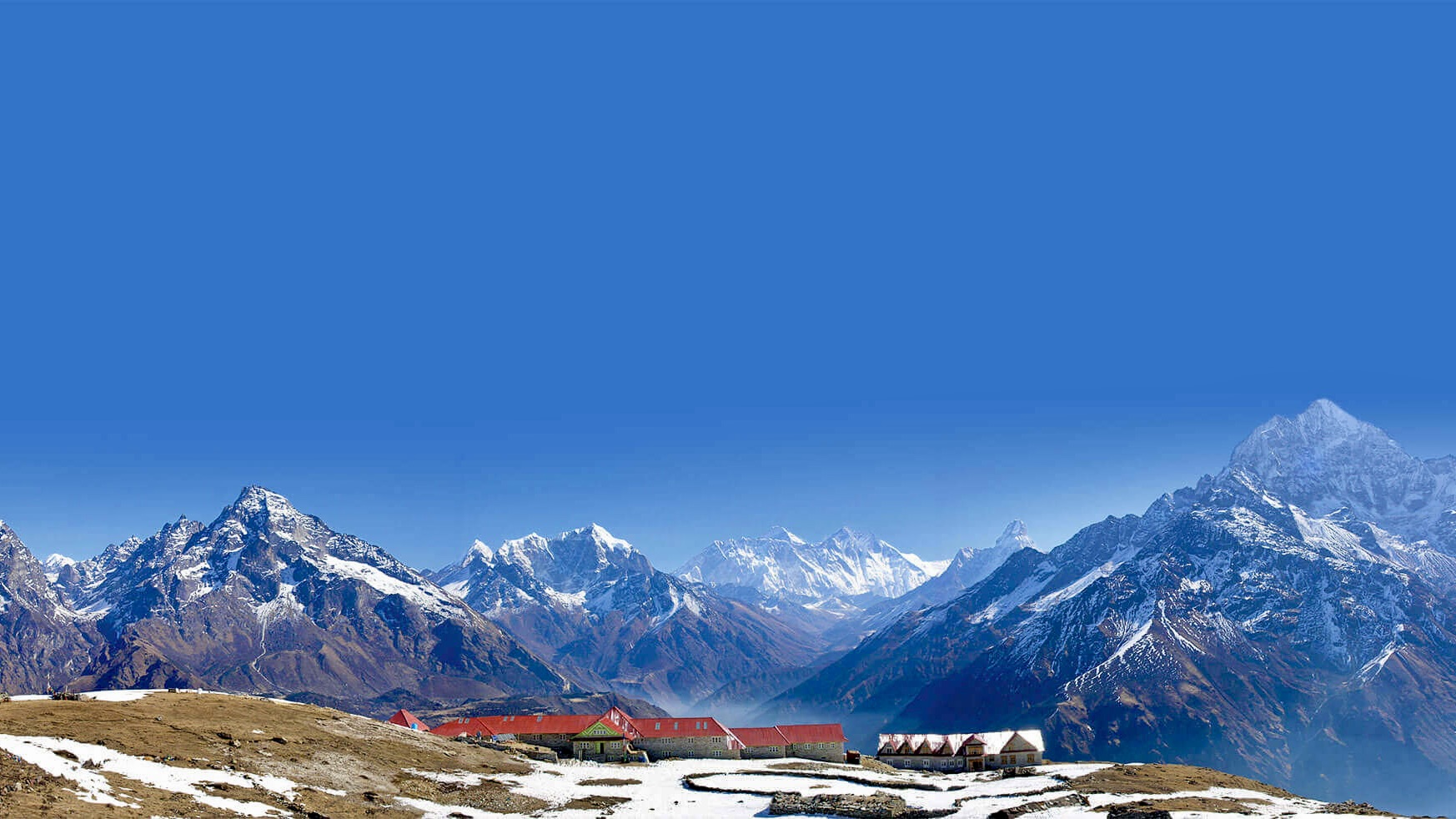
Day 7-9 - Trek to Tengboche, Dingboche
Trek towards Tengboche, known for its iconic monastery, and onward to Dingboche. These villages offer comfortable, upscale lodges for your rest.
Day 10-13 - Trek to Lobuche, Gorak Shep, visit Everest Base Camp and Kala Patthar
Trek towards Lobuche, then to Gorak Shep. Visit Everest Base Camp and climb Kala Patthar for stunning panoramic views of Everest and other Himalayan giants.
Day 14-15 - Trek down to Pheriche, fly to Kathmandu from Lukla
Begin your descent down the same trail, staying overnight in Pheriche before continuing to Lukla for your flight back to Kathmandu.
Day 16 - Departure
After breakfast, you will be transferred to the airport for your return flight, or you can choose to extend your stay in Nepal.
In the Luxury Everest Base Camp Trek, special attention is given to providing superior accommodations and a higher level of personal care. You will be staying in luxury lodges and guest houses throughout the trek, often with amenities like heated rooms, comfortable beds, western toilets, and excellent meals.
The cost of a luxury trek will, of course, be higher than that of a standard trek. However, for those looking for a once-in-a-lifetime experience with added comfort, the Luxury Everest Base Camp Trek could be the perfect choice.
Everest View Trek or Everest Panorama Trek
The Everest View Trek, also known as the Everest Panorama Trek, is an excellent choice for those who wish to experience the beauty of the Everest region but have limited time or are not prepared for a full-fledged trek to Everest Base Camp. This trek offers mesmerizing views of Everest and other surrounding peaks without the need for high-altitude trekking. Here's a general itinerary:
Day 1 - Arrival in Kathmandu
Upon arrival in Kathmandu, you'll be greeted by a representative from Luxury Holidays Nepal and transferred to your hotel.
Day 2 - Kathmandu Sightseeing and Preparation
You can spend the day exploring Kathmandu, visiting its many UNESCO World Heritage Sites, and preparing for your trek.
Day 3 - Kathmandu to Lukla (Flight), trek to Phakding
Take a thrilling flight to Lukla and begin your trek to the village of Phakding.
Day 4 - Trek to Namche Bazaar
Trek along the Dudh Koshi River and ascend to the bustling Sherpa town of Namche Bazaar, the unofficial capital of the Khumbu region.
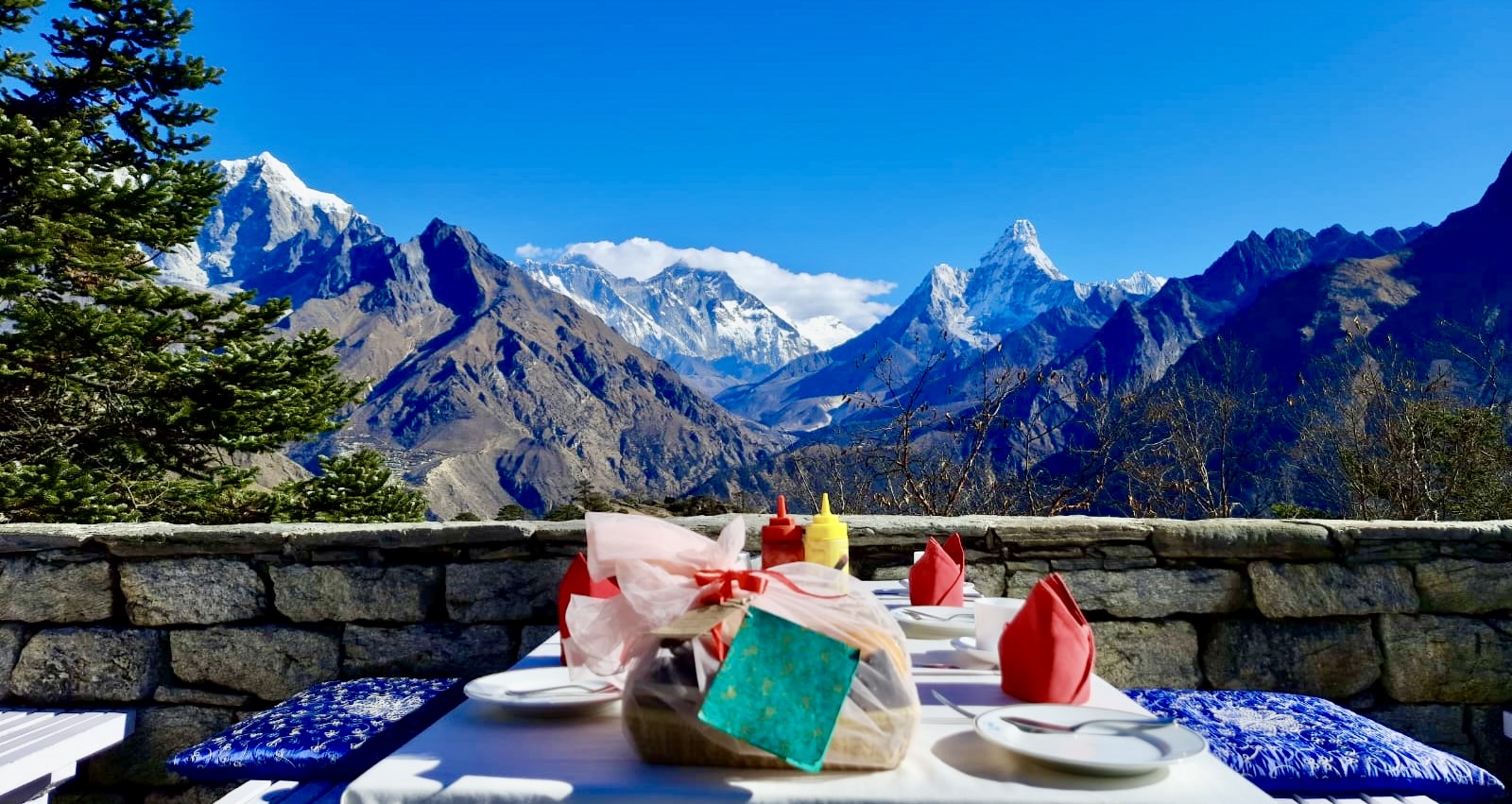
Day 5 - Acclimatization Day in Namche Bazaar
Spend the day acclimatizing in Namche Bazaar. You can explore the local markets, visit the Sherpa Museum, or hike up to the Everest View Hotel for fantastic panoramic views of Everest, Lhotse, and Ama Dablam.
Day 6 - Trek to Tengboche
Trek to the village of Tengboche, home to the largest monastery in the Everest region. From here, you can enjoy close-up views of Ama Dablam and distant views of Everest.
Day 7-8 - Return to Namche Bazaar and Lukla
Begin your descent back to Namche Bazaar and then Lukla, where you'll spend your final night in the Everest region.
Day 9 - Lukla to Kathmandu (Flight)
Fly back to Kathmandu and spend the rest of the day at leisure, perhaps doing some last-minute souvenir shopping.
Day 10 - Departure
Your Everest View Trek ends here. You'll be transferred to the airport for your return flight.
The Everest View Trek is less demanding than the full Everest Base Camp Trek and can be done in a shorter timeframe. Nevertheless, it offers an authentic trekking experience and fantastic views of the world's highest mountain, making it a perfect option for novice trekkers, families, and those on a tight schedule.
Accommodation options on Everest Base Camp Trek
The accommodation on the Everest Base Camp Trek varies from basic tea houses to more comfortable lodges depending on the location and the trekking package you've opted for. Here's an overview of the types of accommodation you can expect during your trek.
Tea Houses: The most common form of accommodation on the Everest Base Camp Trek is tea houses. These are local establishments that offer a place to rest, eat, and sleep. They are typically family-run and provide a cozy atmosphere. However, amenities are basic. Rooms typically have two single beds with mattresses, pillows, and blankets. Bathrooms are generally shared and hot showers, if available, come at an extra cost.
Lodges: As you trek higher into the mountains, you'll find fewer accommodations. These lodges provide similar amenities to tea houses but can be a bit more basic due to the remote location.
Guesthouses: In larger villages like Lukla and Namche Bazaar, you can find guesthouses that provide slightly more comfortable accommodation. These guesthouses may offer private rooms with en-suite bathrooms, hot showers, and even Wi-Fi.
Luxury Lodges: There are a few luxury lodges along the trek, particularly in Namche Bazaar and Lukla, that offer the comfort of a hotel. These lodges provide comfortable rooms with attached bathrooms, a variety of dining options, Wi-Fi, and often stunning views.
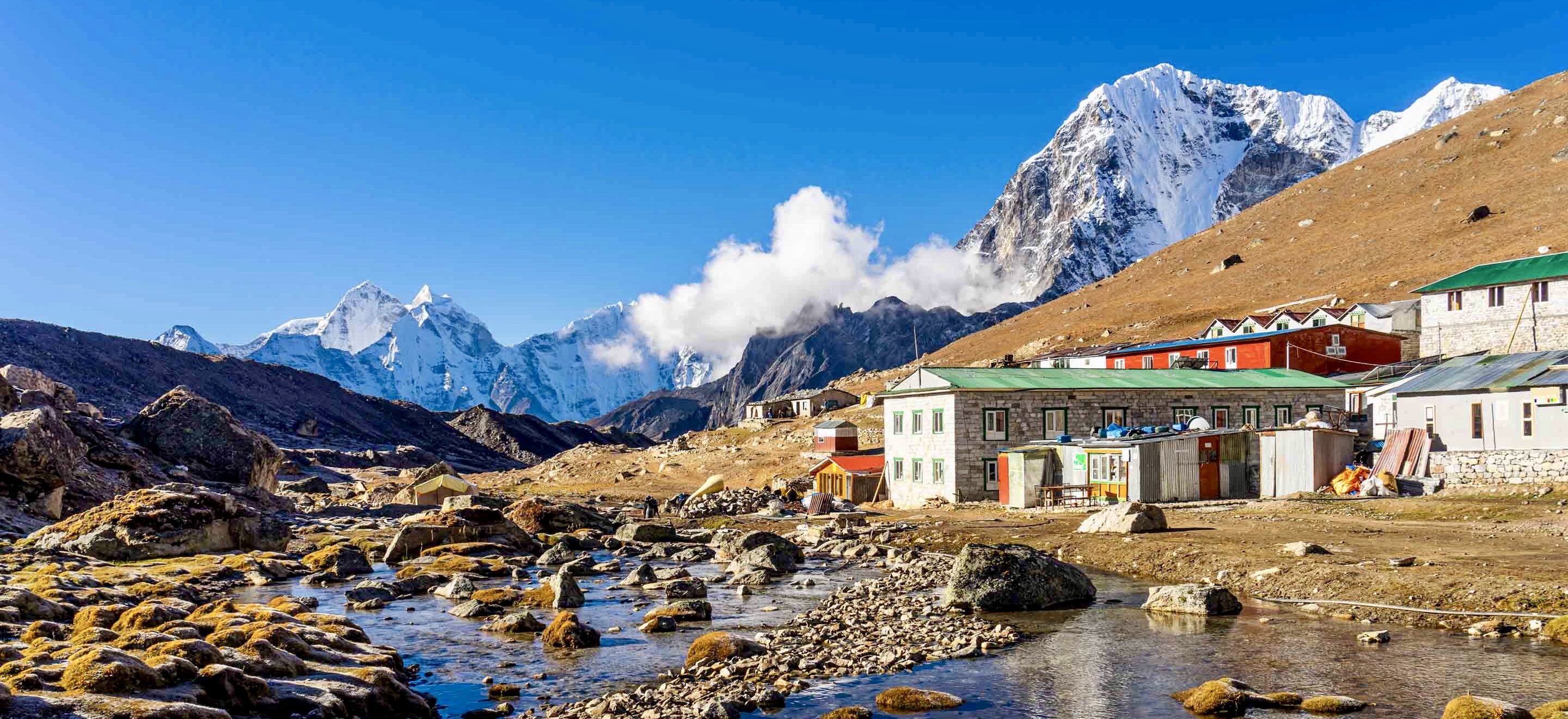
It's important to note that during the peak trekking seasons (spring: March-May and autumn: September-November), accommodations along the Everest Base Camp Trek can fill up quickly. Therefore, it's recommended to book your accommodation in advance or to trek with a guided tour group that arranges accommodation for you. Remember, the cost and type of accommodation can greatly affect your overall trekking experience, so choose what best suits your needs and preferences.
Foods on Everest Base Camp Trek
The food on the Everest Base Camp Trek offers a surprisingly varied range of dishes, considering the remoteness of the area. Here's a quick overview of what you can expect:
Breakfast: The most common breakfast items include Tibetan bread, pancakes, porridge, eggs (boiled, scrambled, omelets), and toast. Most tea houses will also serve a variety of hot drinks like tea, coffee, and hot chocolate.
Lunch and Dinner: Both lunch and dinner menus in the tea houses are quite similar. You can often find a range of dishes from traditional Nepali food to more Western-oriented meals. The most common and affordable meal is Dal Bhat - a traditional Nepali dish consisting of rice, lentil soup, and vegetable or meat curry. It's also bottomless in most places, which is perfect after a long day's trek. Other common dishes include fried noodles (often with egg, vegetable or cheese), pasta, pizza, and even dumplings (Momo).
Snacks: Snacks can range from biscuits and chocolate bars to dried fruits and nuts. These are important for keeping your energy levels up in between meals while trekking.
Drinks: It's crucial to stay hydrated during the trek. Bottled water is available but it's more eco-friendly (and cheaper) to fill a reusable water bottle with boiled or treated water. You can also get a variety of hot drinks like different types of tea, coffee, and hot chocolate.
Remember, the higher you go up, the menu items become more limited and expensive due to the difficulties in transporting supplies in such rugged terrain. Also, it's recommended to eat a carb-rich diet to keep your energy levels up and to help with acclimatization to the high altitude. Lastly, avoid alcohol and meat if possible. The former can dehydrate you and exacerbate the effects of altitude sickness, while the latter is often not fresh due to the lack of refrigeration.
Drinks on Everest Base Camp Trek
While trekking to the Everest Base Camp, there are several options for staying hydrated and enjoying local beverages. However, it's crucial to note that alcohol should be avoided because it can dehydrate you and exacerbate the effects of altitude sickness. Here are some common drink options:
Water: Drinking water is incredibly important to stay hydrated during your trek. Bottled water is available at tea houses and shops along the route but it can be quite expensive, especially as you go higher. A more cost-effective and environmentally friendly option is to refill a reusable water bottle with boiled or treated water. You can also use water purification tablets or portable water filters to ensure the water is safe to drink.
Tea: The Everest region is well-known for its tea, particularly Sherpa butter tea, which is a mixture of tea, salt, and yak butter. The drink has a unique taste and can provide a quick energy boost due to its high-calorie content. Traditional black tea and milk tea are also commonly available.
Hot Lemon: This is a popular beverage in tea houses. It's essentially a cup of hot water with a slice of lemon. It's refreshing and can help with digestion.
Coffee: While you shouldn't expect high-quality barista-made coffee in the Himalayas, instant coffee is widely available in tea houses.
Hot Chocolate: For those with a sweet tooth, hot chocolate is often on the menu and can be a comforting treat after a day of trekking.
Soft Drinks: Coca-Cola, Sprite, and Fanta are commonly available, but they are often quite expensive as you get higher due to the transportation cost.
Remember to drink regularly to stay hydrated, especially because symptoms of dehydration can feel very similar to those of altitude sickness. Furthermore, it's also advisable to drink plenty of warm beverages to help with acclimatization.
Flight Options on Everest Base Camp Trek
The journey to Everest Base Camp typically starts and ends with a flight from Nepal's capital, Kathmandu, to the Lukla Airport, also known as Tenzing-Hillary Airport. This airport serves as the main gateway to the Everest Region.
Kathmandu to Lukla Flight: This short 30-minute flight is considered one of the most exciting flights in the world. As you fly east from Kathmandu towards the Sherpa town of Lukla, you can enjoy stunning views of the Himalayan peaks. However, the Tenzing-Hillary Airport is situated at a high altitude and has a very short runway, which makes landing and taking off quite thrilling. Several domestic airlines, including Yeti Airlines and Buddha Air, operate daily flights from Kathmandu to Lukla, weather permitting.
Lukla to Kathmandu Flight: After your trek to the Everest Base Camp, you'll return to Lukla for your flight back to Kathmandu. Again, flight schedules are highly dependent on weather conditions. Delays and cancellations are quite common, especially during the monsoon season, so it's always wise to have a buffer of a couple of days in your schedule.
Everest Heli Trek: For those looking for a more luxurious and comfortable journey, there are helicopter tours available. The Everest Base Camp Heli Trek usually involves trekking up to the base camp and then taking a helicopter flight back to Kathmandu. This option gives you breathtaking aerial views of the entire region.
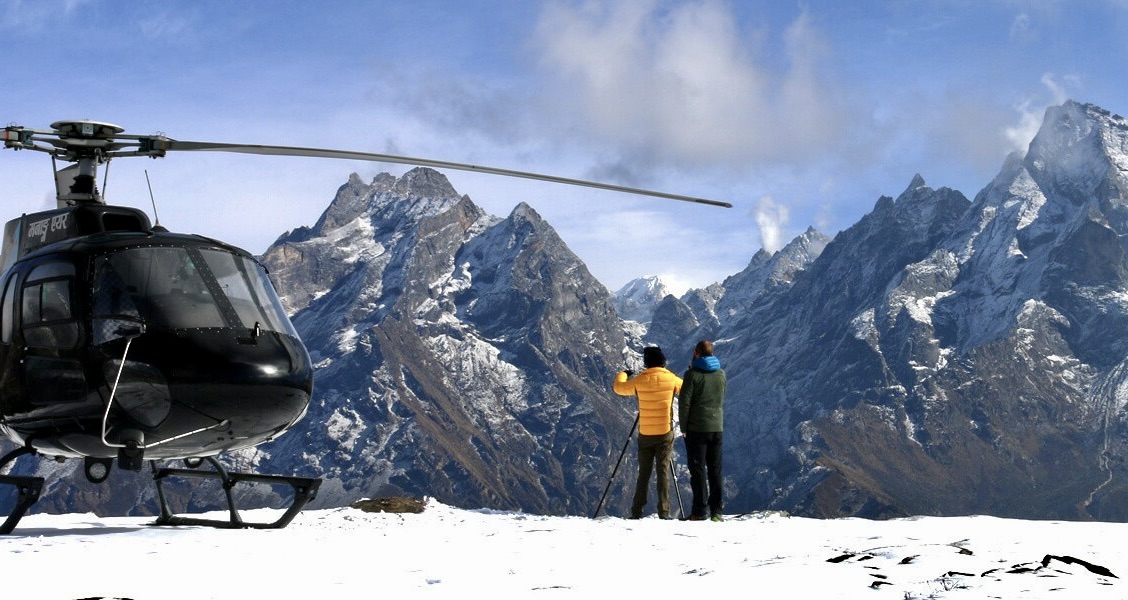
Alternative Option – Jiri to Lukla Trek: If you have more time and wish to avoid the flight to Lukla, you can take a bus from Kathmandu to Jiri and start your trek from there. The trek from Jiri to Lukla is beautiful and less crowded, and it allows for better acclimatization.
While flights offer convenience and stunning views, they are quite costly and susceptible to weather conditions. Therefore, while planning your journey, you should take into account the cost, time, and potential for delays or cancellations.
Trekking Guide on Everest Base Camp Trek
A guide on your Everest Base Camp Trek can make a substantial difference in your overall experience, making your journey safer and more enriching. Here's why you might want to consider hiring a guide for your trek:
- Safety: The Himalayan terrain can be unpredictable, with the potential for sudden weather changes, and challenging trails. A trained guide with thorough knowledge of the region can help ensure your safety. They can provide first aid in case of injuries, advise on safe drinking water, and provide guidance in case of altitude sickness.
- Navigation: The trails leading to Everest Base Camp can be complex, with multiple routes. A guide can help you navigate these paths efficiently and make sure you don't lose your way in remote areas.
- Local Knowledge: A local guide can enrich your trekking experience by sharing insights about the local culture, traditions, flora, and fauna. Their stories can add another dimension to your journey.
- Logistical Support: A guide can help arrange lodging and meals during your trek, ensuring that you have a comfortable journey. They can also assist in coordinating with porters if you have hired any to carry your luggage.
- Permits and Regulations: Trekking in the Everest region requires various permits. A guide can assist in obtaining these, and ensure you follow all regulations in the region.
- Language Assistance: If you don't speak Nepali, a guide can help you communicate with locals during your journey.
While hiring a guide, ensure that they are registered with the local trekking guide association. This ensures that they have undergone proper training and are certified to guide treks in the region.
While a guide can add great value to your trek, the final responsibility for your safety lies with you. Always listen to your guide's advice, especially regarding acclimatization and health issues.
Porter on Everest Base Camp Trek
Hiring a porter for your Everest Base Camp Trek can greatly enhance your trekking experience, allowing you to focus on the trek and the stunning views without the burden of a heavy backpack. Here are some reasons why you might consider hiring a porter:
- Ease of Trekking: A porter can carry your heavy gear, reducing the physical strain and making your trek more enjoyable. This can be particularly beneficial at higher altitudes, where every step can be a challenge due to the thin air.
- Local Economy Support: Hiring a porter not only makes your trek easier but also provides employment for the local people, thus contributing to the local economy.
- Cultural Exchange: Many porters are also locals from the region, and interacting with them can provide insights into the local culture and way of life.
The typical weight a porter carries is between 25 to 30 kg, and they can be hired either individually or through a trekking agency. The cost of hiring a porter can vary, but on average, you might expect to pay around $15-$20 per day.
It's important to note that the ethical treatment of porters is a significant concern in the trekking industry. Be respectful, and if possible, limit your luggage to 15 kg as it is the weight that one porter can carry comfortably.
Acclimatization on Everest Base Camp Trek
Acclimatization is a crucial part of the Everest Base Camp Trek, as it helps to prevent the onset of Acute Mountain Sickness (AMS). AMS can occur when the body doesn't have enough time to adapt to the decreased oxygen levels at high altitudes. Symptoms can include headaches, nausea, dizziness, and extreme fatigue. In severe cases, it can be life-threatening.
- The Acclimatization Process: Generally, acclimatization involves a gradual ascent, giving your body time to adapt to the altitude. This process includes climbing high during the day and sleeping low at night, helping the body to adjust to the lower oxygen levels.
- Acclimatization Days: During the Everest Base Camp Trek, usually two acclimatization days are included in the itinerary, typically in Namche Bazaar and Dingboche. These are days where you stay at the same altitude (or do a slight climb during the day) and rest to allow your body to adjust to the thin air.
- Recognizing AMS: It's essential to understand the signs of AMS and take them seriously. Headache, nausea, fatigue, and shortness of breath are all signs that you may be experiencing AMS.
- Preventing AMS: The best way to prevent AMS is by ascending slowly, staying hydrated, and avoiding alcohol and smoking. Diamox (acetazolamide) is a medication often used to prevent and reduce the symptoms of AMS. Always consult with a doctor before your trek for personalized advice.
"Climb high, sleep low," is the mantra for acclimatizing. The key is to listen to your body and take it slow. If you feel symptoms of AMS, inform your guide immediately. If symptoms persist or worsen, descend to a lower altitude as soon as possible. Safety should always be the priority on your trek.
Altitude sickness on Everest Base Camp Trek
Altitude sickness, also known as Acute Mountain Sickness (AMS), is a common issue that trekkers face while trekking to high-altitude regions like the Everest Base Camp. As you ascend above 2,500 meters, the level of oxygen in the air starts to decrease, and this can lead to AMS if your body doesn't have enough time to adapt to the changes in air pressure and oxygen levels.
- Symptoms: The symptoms of AMS can vary but often include headaches, nausea, dizziness, tiredness, shortness of breath, loss of appetite, and trouble sleeping. In severe cases, it can lead to life-threatening conditions like High Altitude Pulmonary Edema (HAPE) or High Altitude Cerebral Edema (HACE).
- Prevention: The most effective way to prevent AMS is by following the "climb high, sleep low" rule, where you ascend gradually and allow your body sufficient time to acclimatize to the new altitude. Also, staying hydrated, eating a high-carbohydrate diet, and avoiding alcohol and tobacco can help in preventing AMS.
- Treatment: If you start to experience mild symptoms of AMS, it's crucial to stop ascending and rest at the same altitude until your symptoms improve. If your symptoms worsen, you should descend to a lower altitude as quickly as possible. Over-the-counter medications like Acetazolamide (Diamox) can also help to alleviate the symptoms of AMS, but they should only be taken under the guidance of a healthcare professional.
There is no rush to reach the base camp, and it's essential to listen to your body and trek at your own pace. If you feel unwell, inform your guide immediately. No summit is worth risking your health or life over.
Altitude variation on Everest Base Camp Trek
The Everest Base Camp trek is renowned for its high-altitude journey, which takes trekkers through varying levels of altitude, starting from Lukla at 2,860 meters (9,383 feet) all the way up to Everest Base Camp at 5,364 meters (17,598 feet).
Below is a rough breakdown of the altitude variation you can expect on a standard EBC trek itinerary:
Lukla: 2,860 meters (9,383 feet)
Phakding: 2,610 meters (8,563 feet)
Namche Bazaar: 3,440 meters (11,286 feet)
Tengboche: 3,860 meters (12,664 feet)
Dingboche: 4,410 meters (14,468 feet)
Lobuche: 4,940 meters (16,210 feet)
Gorak Shep: 5,170 meters (16,962 feet)
Everest Base Camp: 5,364 meters (17,598 feet)
Kala Patthar: 5,643 meters (18,513 feet) - Optional for most trekkers who want the best view of Mt. Everest.
The precise altitude variation can vary depending on your specific trek itinerary and any additional hikes or side trips you might undertake during your trek.
An essential aspect of handling this altitude variation is to ensure proper acclimatization. This process helps your body adjust to the decreased oxygen levels at high altitudes, which can help prevent Acute Mountain Sickness (AMS). Regular hydration, adequate rest, and gradual ascent can assist with acclimatization during your trek.
Luxury Holidays Nepal Pvt. Ltd. has established a reputable track record in organizing some of the best and most memorable treks to Everest Base Camp. With a team of experienced guides, comprehensive itineraries, and a strong emphasis on safety and enjoyment, they ensure that every trekker gets the most out of their Everest adventure.
With a variety of options, from standard Everest Base Camp treks to luxury treks, Everest Heli treks, and even customized itineraries, we provide options that cater to every adventurer's preferences. Our extensive knowledge of the Khumbu region, attention to logistical details, and commitment to ethical and sustainable tourism make them a top choice for your Everest Base Camp Trek.
Whether you're a seasoned trekker looking for a new challenge or a novice adventurer ready for the trip of a lifetime, Luxury Holidays Nepal has the expertise, resources, and commitment to customer satisfaction to make your Everest Base Camp trek a fulfilling and unforgettable experience.
The Everest Base Camp Trek is a journey of discovery, challenge, and incredible natural beauty. From the exhilarating flight into Lukla to the thrill of reaching Everest Base Camp and Kala Patthar, every step of this journey brings new surprises and unforgettable experiences. The trek’s standard 12-14 days itinerary is designed to maximize your experience of the region and its people, as well as to ensure adequate acclimatization to the high altitude. However, additional side trips like the Gokyo Lakes Trek can extend the itinerary, enhancing your adventure with even more stunning vistas.
Remember, regardless of the specific itinerary, the journey to Everest Base Camp is not just about reaching the destination; it’s about immersing yourself in the culture of the Khumbu region, bonding with fellow trekkers, and challenging yourself physically and mentally. Take the time to enjoy each day, from the picturesque villages and verdant valleys to the awe-inspiring peaks and icefalls. At the end of your trek, you’ll come away with not only a sense of accomplishment but a deep appreciation for the majestic Himalayan landscape that is the backdrop of the Everest Base Camp Trek.
And always remember, proper planning, packing, and physical preparation can make your Everest Base Camp Trek even more enjoyable. So, lace up your trekking boots and set out on the adventure of a lifetime. The Everest Base Camp Trek awaits!
FAQs for What is the itinerary for the Everest Base Camp Trek?
Q: How many days does it take to complete the Everest Base Camp Trek?
A: The standard Everest Base Camp Trek takes around 12-14 days. However, variations like the Gokyo Lakes Trek or the inclusion of an Island Peak climb can extend this period to 16-20 days.
Q: How many hours do I trek each day on the Everest Base Camp Trek?
A: Typically, you will trek for about 4 to 9 hours each day, depending on the terrain and distance between the stops. However, these are manageable walks with plenty of breaks.
Q: What is the highest altitude reached in the Everest Base Camp Trek?
A: The highest point of the Everest Base Camp Trek is Kala Patthar at 5,550 meters (18,204 feet).
Q: Do I need to be extremely fit to undertake the Everest Base Camp Trek?
A: While you don't need to be an athlete, a moderate level of physical fitness is necessary. The ability to walk for several hours a day, often at high altitudes and sometimes on challenging terrain, is essential. Prior trekking experience is beneficial, but not mandatory.
Q: Can I customize the Everest Base Camp Trek Itinerary?
A: Yes, many tour operators provide customizable itineraries. However, due to altitude concerns, it's essential to maintain a steady ascent and include sufficient acclimatization days.
Q: Is acclimatization included in the Everest Base Camp Trek Itinerary?
A: Yes, acclimatization is a crucial part of the Everest Base Camp Trek Itinerary. It typically includes two rest and acclimatization days at Namche Bazaar and Dingboche.
Q: What is the most challenging part of the Everest Base Camp Trek?
A: The most challenging part of the trek is the ascent to Kala Patthar due to the high altitude and potential for cold, windy weather.
Q: What facilities will I find in the lodges on the Everest Base Camp Trek?
A: The facilities are basic but comfortable. Most teahouses offer twin-sharing rooms with common bathrooms. Hot showers are usually available for an extra charge. The teahouses also offer a range of food and drinks.
Q: Is there a risk of getting altitude sickness on the Everest Base Camp Trek?
A: Yes, there is a risk of altitude sickness on any trek that goes above 2,500 meters. However, the itinerary is designed to allow you to acclimatize gradually to minimize this risk. It's also recommended to keep hydrated, avoid alcohol, eat a high-calorie diet, and ascend slowly.
Everest Region Trekking Packages
Everest Heli Trek with Kalapathher Landing
Gokyo Lakes and Everest Base Camp Trek
Everest Base Camp Heli Trek - 9 Days
VVIP Everest Base Camp Luxury Trek
Everest Base Camp and Gokyo Lakes Luxury Helicopter Trek
Luxury Everest Base Camp Trek - 14 Days
If you need any further information, please contact us by email: at [email protected], Phone: at +977- 985 100 5129 (WhatsApp)




